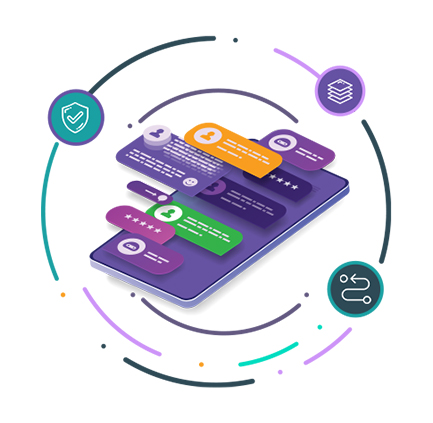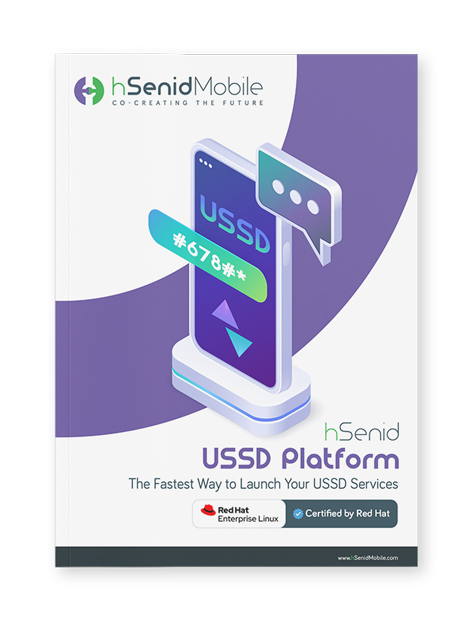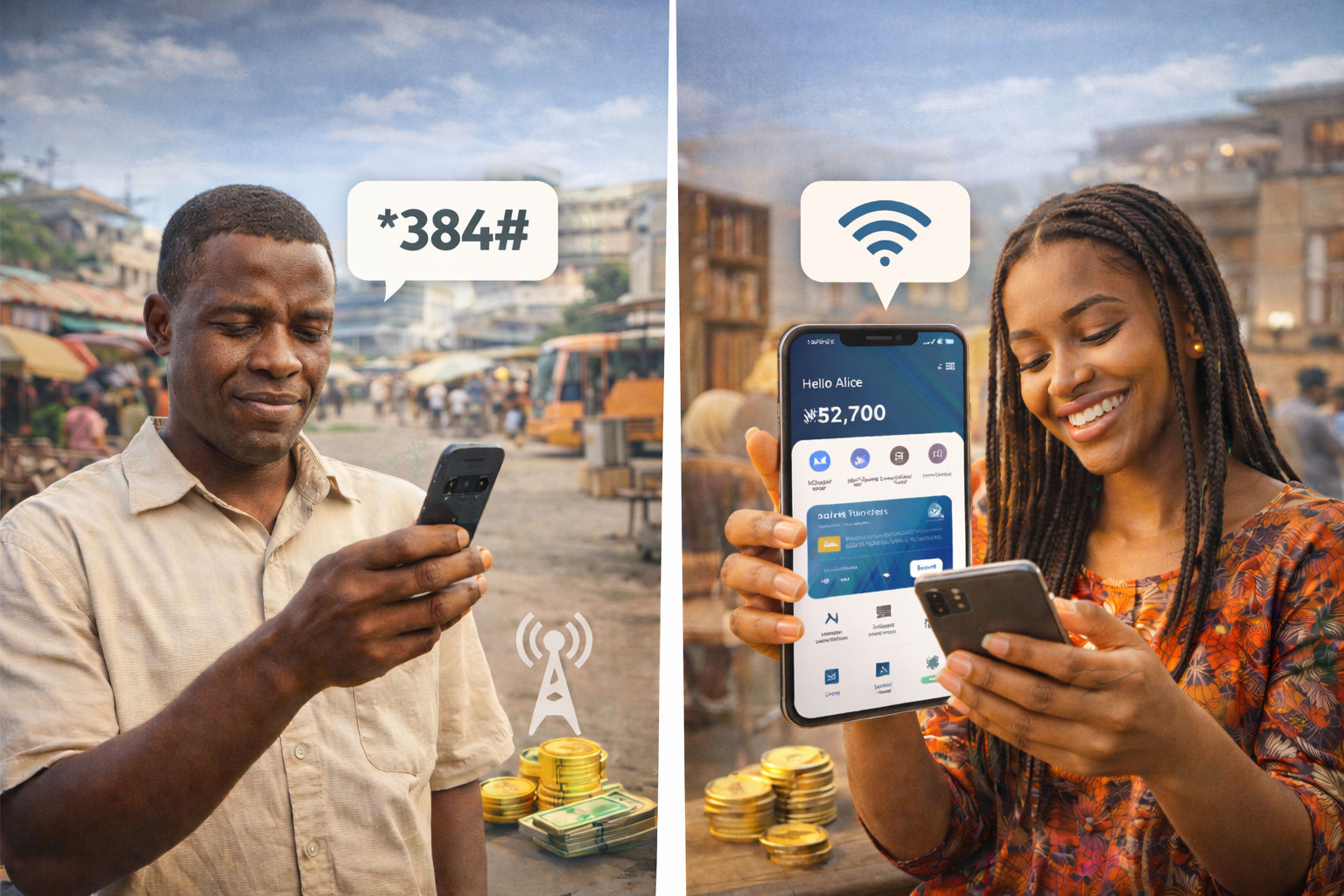For over two decades, banking has been steadily moving from physical branches to digital-first experiences. Mobile apps, web banking portals, and contactless payments have changed the way customers interact with financial institutions. Yet, one technology; Unstructured Supplementary Service Data (USSD), has remained remarkably relevant, especially in emerging markets. While some see it as “old-school,” USSD continues to dominate certain customer segments for one simple reason: trust.
This is not a story about nostalgia for older tech. It’s about how USSD gateway providers have helped banks maintain a secure, accessible, and cost-effective communication channel for millions, even as the financial ecosystem becomes more app-heavy and data-driven.
USSD is often underestimated because it doesn’t have flashy graphics or the latest app integrations. But its resilience comes from features that directly address the needs of a huge user base:
Banks in Africa, Asia, and parts of Latin America still report that more than 50% of their mobile banking transactions are conducted over USSD. This makes it less of a “legacy channel” and more of a “critical core” in their mobile strategies.
Security perceptions matter in finance. Many users trust USSD more than apps because the session-based protocol doesn’t leave transaction trails on the device. For customers wary of malware or app-based fraud, USSD feels safer.
For example, rural customers in Kenya and India often cite USSD’s reliability during poor network conditions as a reason to avoid app-based banking entirely. In Nigeria, banks report that USSD adoption actually increased after several high-profile mobile app breaches.
In short, trust is earned, and USSD has decades of unbroken reliability behind it.
If USSD is the lifeline, USSD gateway providers are the infrastructure engineers keeping it alive and scalable. These providers connect telecom networks to banking systems, ensuring that USSD codes trigger the correct banking functions.
Top-tier providers offer:
This isn’t just about uptime; it’s about making sure banks can deliver USSD services with the same reliability and compliance standards as their app and web platforms.
It’s tempting to frame this as a competition, but in reality, USSD and mobile apps serve different audiences.
Rather than replacing USSD, apps are complementing it. The most effective banks design omnichannel strategies that recognize USSD as a permanent fixture.
In markets like India, Ghana, and South Africa, central banks have explicitly mandated that USSD services remain available for core banking functions. Why? Because it supports financial inclusion goals.
Governments see USSD as a safeguard for ensuring that the unbanked and underbanked who may not have smartphones can still access essential banking services such as:
These mandates give USSD gateway providers a clear long-term role in banking infrastructure.
While the basic USSD flow hasn’t changed much in 20 years, providers and banks have introduced enhancements:
For example, a leading East African bank partnered with a USSD gateway provider to integrate its mobile wallet recharge into the same USSD session as balance checks, reducing customer transaction times by nearly 25%.
Contrary to popular belief, USSD can be part of a strong anti-fraud strategy. Since transactions don’t store data locally, fraudsters can’t easily exploit cached credentials.
Some USSD gateway providers have implemented multi-factor authentication over USSD, where a transaction confirmation is sent via a separate secure channel, like a voice call or SMS OTP. This blends the convenience of USSD with modern security practices.
In countries where smartphone penetration is under 45%, USSD isn’t just relevant, it’s essential. Financial inclusion targets from institutions like the World Bank and GSMA explicitly list USSD as a core tool for enabling banking access to remote communities.
Microfinance institutions, savings cooperatives, and rural banks frequently use USSD to allow account creation, micro-loan applications, and deposit tracking, all without requiring a data plan.
Of course, USSD isn’t without its hurdles:
But these challenges are not insurmountable. Modern USSD gateway providers are addressing them with better network routing, load balancing, and more efficient USSD script designs.
With 5G rolling out globally, will USSD fade? The answer is: unlikely, at least in the next 10–15 years in emerging markets. Banks that invest in upgrading their USSD experiences will continue to reap benefits, particularly in customer loyalty and market penetration.
We’re already seeing hybrid strategies emerge:
These hybrid models could extend USSD’s lifespan far beyond what many analysts predict.
In a world obsessed with new tech, USSD’s continued dominance in certain regions is a reminder that the best solution is often the most practical one. For banks, it’s not about replacing USSD with flashy apps, but about delivering the right service to the right audience through the right channel.
USSD gateway providers will remain at the heart of this effort, ensuring the infrastructure is secure, reliable, and adaptable to evolving needs.
Banks that embrace USSD as a key pillar in their mobile strategy, alongside apps, chatbots, and web platforms, will not only serve their existing customers better, they will also extend their reach into markets that others overlook. Discover more at hSenid Mobile. Talk to us about implementing a secure, scalable USSD solution today.
This is not a story about nostalgia for older tech. It’s about how USSD gateway providers have helped banks maintain a secure, accessible, and cost-effective communication channel for millions, even as the financial ecosystem becomes more app-heavy and data-driven.
1. Why USSD Remains the Banking Lifeline for Millions
USSD is often underestimated because it doesn’t have flashy graphics or the latest app integrations. But its resilience comes from features that directly address the needs of a huge user base:
- No internet required: perfect for low-connectivity regions.
- Works on basic feature phones: not everyone owns a smartphone.
- Instant and secure: no local data storage, reducing security risks.
- Low cost: transactions don’t rely on expensive data packages.
Banks in Africa, Asia, and parts of Latin America still report that more than 50% of their mobile banking transactions are conducted over USSD. This makes it less of a “legacy channel” and more of a “critical core” in their mobile strategies.
2. The Trust Factor: Why Customers Still Prefer USSD
Security perceptions matter in finance. Many users trust USSD more than apps because the session-based protocol doesn’t leave transaction trails on the device. For customers wary of malware or app-based fraud, USSD feels safer.
For example, rural customers in Kenya and India often cite USSD’s reliability during poor network conditions as a reason to avoid app-based banking entirely. In Nigeria, banks report that USSD adoption actually increased after several high-profile mobile app breaches.
In short, trust is earned, and USSD has decades of unbroken reliability behind it.
3. How USSD Gateway Providers Power the Banking Backbone
If USSD is the lifeline, USSD gateway providers are the infrastructure engineers keeping it alive and scalable. These providers connect telecom networks to banking systems, ensuring that USSD codes trigger the correct banking functions.
Top-tier providers offer:
- High availability architecture to handle transaction peaks.
- Advanced security layers like encrypted signaling and fraud detection.
- Flexible integration with core banking and CRM platforms.
- Analytics dashboards to monitor transaction patterns.
This isn’t just about uptime; it’s about making sure banks can deliver USSD services with the same reliability and compliance standards as their app and web platforms.
4. USSD vs. Mobile Banking Apps: The Real Picture
It’s tempting to frame this as a competition, but in reality, USSD and mobile apps serve different audiences.
| Feature | USSD | Mobile Banking App |
|---|---|---|
| Internet Required | No | Yes |
| Device Compatibility | Works on all phones | Smartphone only |
| Speed on Low Networks | Instant | Often slow or non-functional |
| Security | Session-based, no local storage | Depends on OS and app security updates |
| User Experience | Text-based, simple navigation | Graphical, more features |
Rather than replacing USSD, apps are complementing it. The most effective banks design omnichannel strategies that recognize USSD as a permanent fixture.
5. Regulatory Confidence in USSD
In markets like India, Ghana, and South Africa, central banks have explicitly mandated that USSD services remain available for core banking functions. Why? Because it supports financial inclusion goals.
Governments see USSD as a safeguard for ensuring that the unbanked and underbanked who may not have smartphones can still access essential banking services such as:
- Checking balances
- Transferring funds
- Paying bills
- Accessing micro-loans
These mandates give USSD gateway providers a clear long-term role in banking infrastructure.
6. Innovations Keeping USSD Relevant
While the basic USSD flow hasn’t changed much in 20 years, providers and banks have introduced enhancements:
- Dynamic menus that personalize options based on user history.
- Multi-language support to broaden accessibility.
- Session optimization to reduce timeouts in low network areas.
- Integration with mobile wallets for hybrid payment flows.
For example, a leading East African bank partnered with a USSD gateway provider to integrate its mobile wallet recharge into the same USSD session as balance checks, reducing customer transaction times by nearly 25%.
7. The Role of USSD in Fraud Prevention
Contrary to popular belief, USSD can be part of a strong anti-fraud strategy. Since transactions don’t store data locally, fraudsters can’t easily exploit cached credentials.
Some USSD gateway providers have implemented multi-factor authentication over USSD, where a transaction confirmation is sent via a separate secure channel, like a voice call or SMS OTP. This blends the convenience of USSD with modern security practices.
8. USSD in the Context of Financial Inclusion
In countries where smartphone penetration is under 45%, USSD isn’t just relevant, it’s essential. Financial inclusion targets from institutions like the World Bank and GSMA explicitly list USSD as a core tool for enabling banking access to remote communities.
Microfinance institutions, savings cooperatives, and rural banks frequently use USSD to allow account creation, micro-loan applications, and deposit tracking, all without requiring a data plan.
9. Challenges Facing USSD Banking
Of course, USSD isn’t without its hurdles:
- Session timeouts due to telecom network congestion.
- Limited interface that restricts the number of features compared to apps.
- Telecom charges that can make services costly for banks or end-users.
But these challenges are not insurmountable. Modern USSD gateway providers are addressing them with better network routing, load balancing, and more efficient USSD script designs.
10. What the Future Holds for USSD in Banking
With 5G rolling out globally, will USSD fade? The answer is: unlikely, at least in the next 10–15 years in emerging markets. Banks that invest in upgrading their USSD experiences will continue to reap benefits, particularly in customer loyalty and market penetration.
We’re already seeing hybrid strategies emerge:
- USSD-triggered app installs: customers start in USSD, then get an app link.
- USSD-to-Chatbot flows: after a USSD transaction, customers receive follow-up service through AI chatbots.
These hybrid models could extend USSD’s lifespan far beyond what many analysts predict.
Conclusion: USSD’s Enduring Place in Banking
In a world obsessed with new tech, USSD’s continued dominance in certain regions is a reminder that the best solution is often the most practical one. For banks, it’s not about replacing USSD with flashy apps, but about delivering the right service to the right audience through the right channel.
USSD gateway providers will remain at the heart of this effort, ensuring the infrastructure is secure, reliable, and adaptable to evolving needs.
Banks that embrace USSD as a key pillar in their mobile strategy, alongside apps, chatbots, and web platforms, will not only serve their existing customers better, they will also extend their reach into markets that others overlook. Discover more at hSenid Mobile. Talk to us about implementing a secure, scalable USSD solution today.








